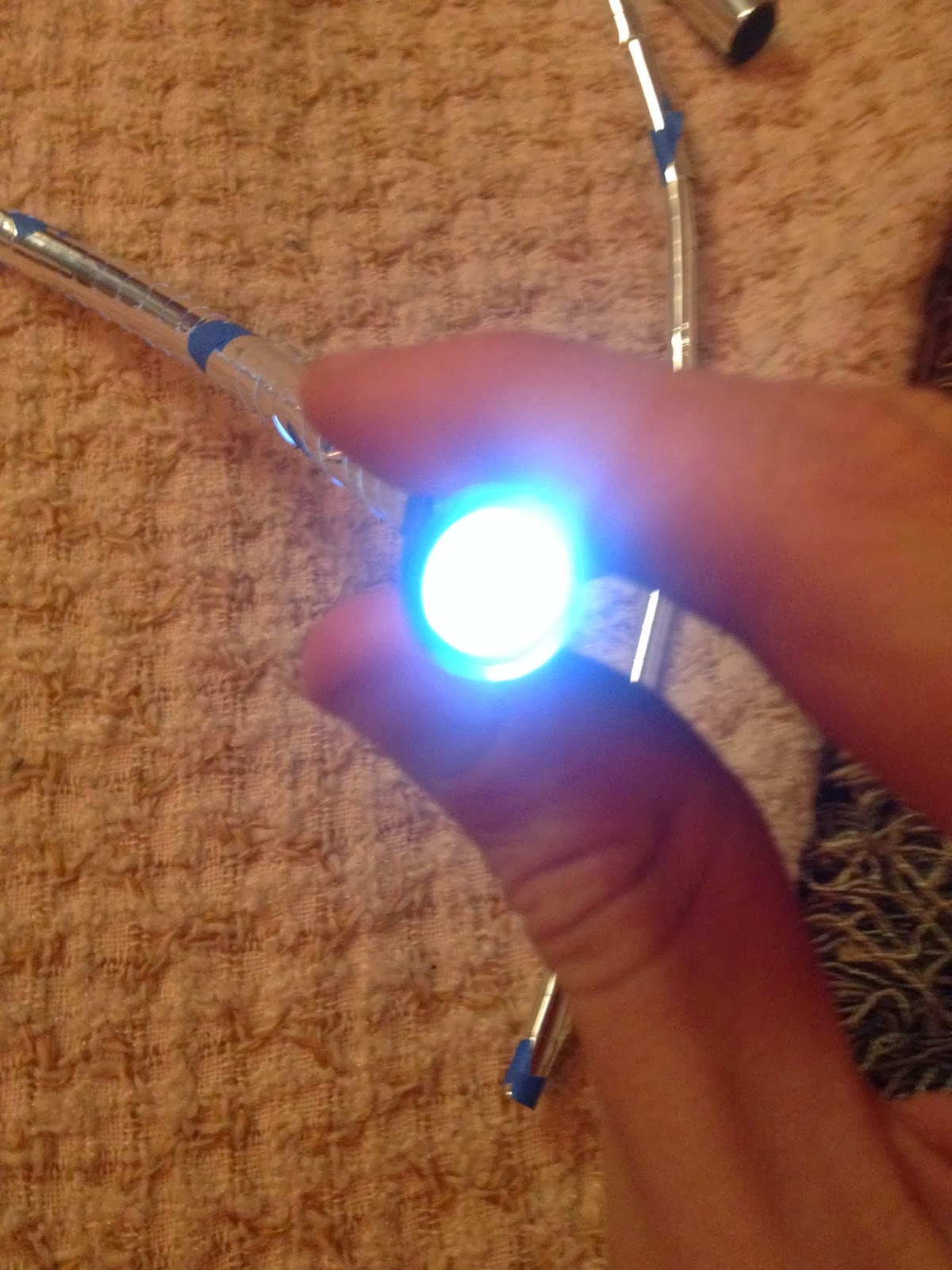 |
| Flexible flashlight! |
The ideal user would walk up to the exhibit, turn on the light, and peer into the end of the tube. They could then bend the tube as they looked into it, observing how the brightness of the light changes with the curvature and size of the tube. Three different tube sizes, each able to be curved however the user wishes, are provided: large, medium, and small (see pictures below).
This design was the combination of two parallel ideas I had been thinking about over the past week. First, when I saw the extra tubing in Room 36, I wanted to see if I could use them to channel water in some way that made interesting reflections. Later, I tried making a maze of mirrors, which could be solved by shining a beam of light at various points in the maze. The idea of using water ended up being too messy, and I didn't have a beam of light strong enough to complete even a simple maze (and the reflective vinyl scattered too much light). However, this generated the idea of wrapping mylar around the tubing, which ended up working well!
To refine my exhibit, I could see taking a number of routes:
1. Make all of the tubes the same length. The length of the tube is ultimately not as interesting as the ability to change its curvature; making all of the tubes identically long would remove this distraction.
2. Affix a light to each tube. Having to switch the light between tubes significantly impeded the fluidity of the experience. Similarly, if I affixed the light-end of the tubes to a fixed box, it might be easier to manipulate the tubes without holding the light in. As an added bonus, it would be easier to compare the amount of visible light in each tube.
3. Include directions. A brief explanation of things to try would be useful; multiple people said they were uncertain if bending the tubes would break the exhibit, but bending the tubes was the intended interaction!
4. Have a single size of tube fixed at various curvatures. This would reduce the interactivity of the exhibit, but might clarify the phenomenon under exploration (tube curvature rather than tube size)
5. Have the tubes shine on a piece of paper. Related to the previous idea, this would make it easier to communicate what is going on in the exhibit (tube curvature affects how much light makes it to the end of the tube), but perhaps at the cost of interactivity.



Reading your post, I was reminded of a light and water show I saw recently. http://www.youtube.com/watch?v=cSxhny5vves Go past 1 minute, and there's movies projected on the water too. This isn't related to mirrors, but the use of water as a projecting surface could be interesting to explore also.
ReplyDelete